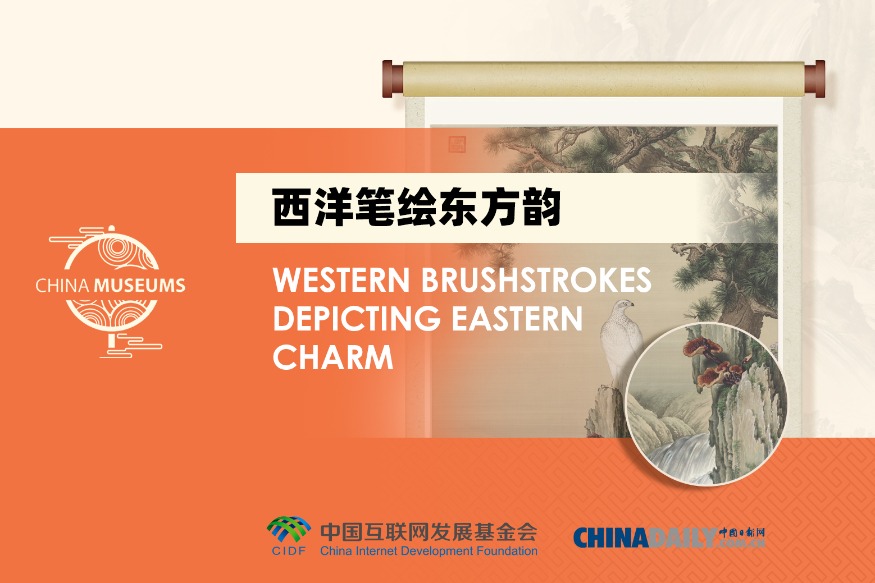Art and trade history gleams with prized mineral of Hotan


A Chinese emperor loved jade so much that he commissioned numerous jade objets d'art from the finest craftsmen, composed more than 800 poems about both ancient and contemporary jade pieces, researched its history, and named 14 of his 17 sons with characters associated with jade — three other sons died young and remained unnamed. The emperor was Qianlong of the Qing Dynasty (1644-1911), China's last imperial dynasty, who lived between 1711 and 1799.
As a crown prince, Qianlong wrote about jade's noble qualities, describing its soothing, understated glow as an apt metaphor for a benevolent person. Later, as emperor, he ensured, partly through military prowess, "a steady supply of raw jade to artisans both within and beyond his court", says Zuo Jun, an expert on ancient Chinese jade from Nanjing Museum in Nanjing city, East China's Jiangsu province.
The prized mineral came from Hotan, located on the southern edge of the Taklimakan Desert in the modern-day Xinjiang Uygur autonomous region. It first came to the attention of a Chinese emperor through emissary-adventurer Zhang Qian, who lived during the Western Han Dynasty (206 BC-AD 24) and whose explorations westward helped establish the ancient Silk Road. Nearly 70 years after Zhang's pioneering journeys, the Han court established the Protectorate of the Western Regions in 60 BC, formally bringing Xinjiang under Chinese rule.
"This significant step was initiated by Liu Xun, an emperor of the Western Han," says Zuo. "In the burial site of his successor, Liu Shi, mythical creatures carved from Hotan jade were discovered — believed to be among the earliest known examples of their kind."
Rather than waiting for the world to come to her, China reached out during the Western Han period, initiating exchanges that sparked profound transformations within the country. This engagement continued in phases over centuries, regaining its vigor in the first half of the Tang Dynasty (618-907), when China's territory extended from the Korean Peninsula in the east to present-day Afghanistan in the west.
During this era, Hotan jade traveled the ancient Silk Road to the Tang capital of Xi'an, where artisans crafted it into various objects, from delicate hairpins for women to belt plaques for men. The belt plaques often depicted Sogdian musicians, reflecting the cultural influence of the Sogdians, an ancient people from Central Asia who controlled the Silk Road trade from the 6th to the 11th centuries.
Given the high material and human costs of long-distance travel, only the most valuable commodities were transported along these routes. Precious stones — sapphires, rubies and emeralds among them — were brought into China and incorporated into jade and gold designs that reflected strong foreign influences.
The pairing of jade and gold would later be adopted by artisans of the Ming Dynasty (1368-1644) who skillfully balanced the two contrasting materials to complement one another. The most opulent designs, often reserved for the aristocracy, featured rubies and sapphires — some sourced from as far as present-day India and Sri Lanka by the treasure fleets of Zheng He (1371-1433), China's legendary maritime explorer.
"It is important to note that while Hotan jade originated from the region of Hotan, it would be wrong to assume that this locale only provided raw materials. An encyclopedia compiled in early 11th-century China indicates that carved ornamental jades, such as belt plaques, also traveled from Hotan to the Tang capital, suggesting that they were produced locally," Zuo says.
In stark contrast to the lavishness of the Tang court, the emperors of the Northern Song Dynasty (960-1127), the founding of which put an end to the political turmoil following Tang's demise in 907, went for a minimalist style, which they then accentuated with a belt decorated with Hotan jade.
The subtle, demure aesthetic of the Northern Song style was deeply rooted in its cultural and religious contexts. Decorative jade headdresses from the time, sometimes shaped like lotus flowers, were worn by Taoist priests — there were many of them at the time — as well as court officials and emperors.
In Listening to a Zither (Ting Qin Tu), a painting attributed to Zhao Ji (1082-1135), the eighth emperor of the Northern Song, the master painter-calligrapher depicts himself as he wished to be seen — a devoted Taoist at one with his music who dressed rather austerely except for the jade headgear.
Through his profound love of art, Zhao, known as Emperor Huizong, embodied the spirit of his time. The Northern Song Dynasty and the following Southern Song Dynasty (1127-1279) witnessed an unprecedented flourishing of the arts, particularly landscape painting. The genre was passionately embraced by generations of Song literati painters who were literarily cultivated and saw brushwork as personal expressions more than anything else.
A carved piece of jade from this period, currently housed in the Nanjing Museum, depicts a man and his boy attendant surrounded by dense foliage sprouting from craggy stones, exemplifying how one form of art can influence another. The man is likely a hermit who has renounced worldly pleasures for a secluded existence in the depths of a forested mountain. The same motif, long celebrated in literati culture, had graced many of the era's most famous landscape paintings.
An authentic touch came from the dabs of ocher on the carved foliage, suggesting an autumnal setting. The coloration, resulting from the iron present in the jade's surface — often referred to as its "skin" — was skillfully accentuated by artisans who recognized its creative potential.
Interestingly, these autumnal forests were not the sole domain for hermits. During this time, a distinctive theme of jade-carving arose from the life of the Khitans, a nomadic people who, by occupying vast regions of present-day northern and northeastern China, coexisted with the Northern Song Dynasty from the late 10th to the early 12th centuries, much to the latter's unease. Featuring images closely associated with the hunting cycle of the Khitans — woods and marshes, trained birds of prey and deer for example — these jade carvings were collectively named chun shui qiu shan, meaning "spring waters and fall mountains".
"The Khitans, who founded the Liao Dynasty in 916, frequently clashed with Song over their borders. While the former commanded a stronger military presence, the latter was culturally much more refined," says Zuo.
"The Khitan rulers, fully aware of this disparity, were eager to adopt aspects of Song culture. Among other things, they implemented the Song imperial code for jade usage and brought Song artisans, including jade craftsmen, into their ranks."
The result was a beautifully carved jade piece that resonated not only with the Khitans but also with their Song counterparts and all who followed, captivated by the surging waters of spring and the color-drenched forests of fall.






































